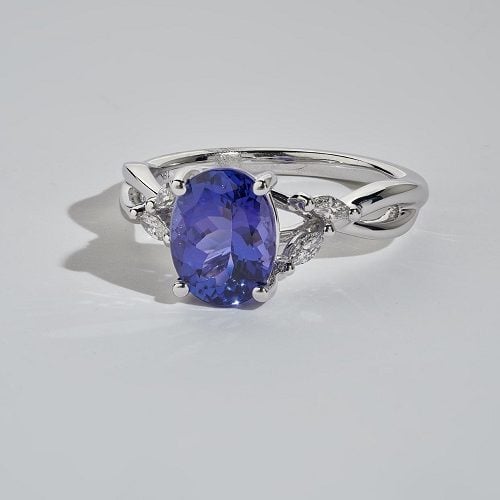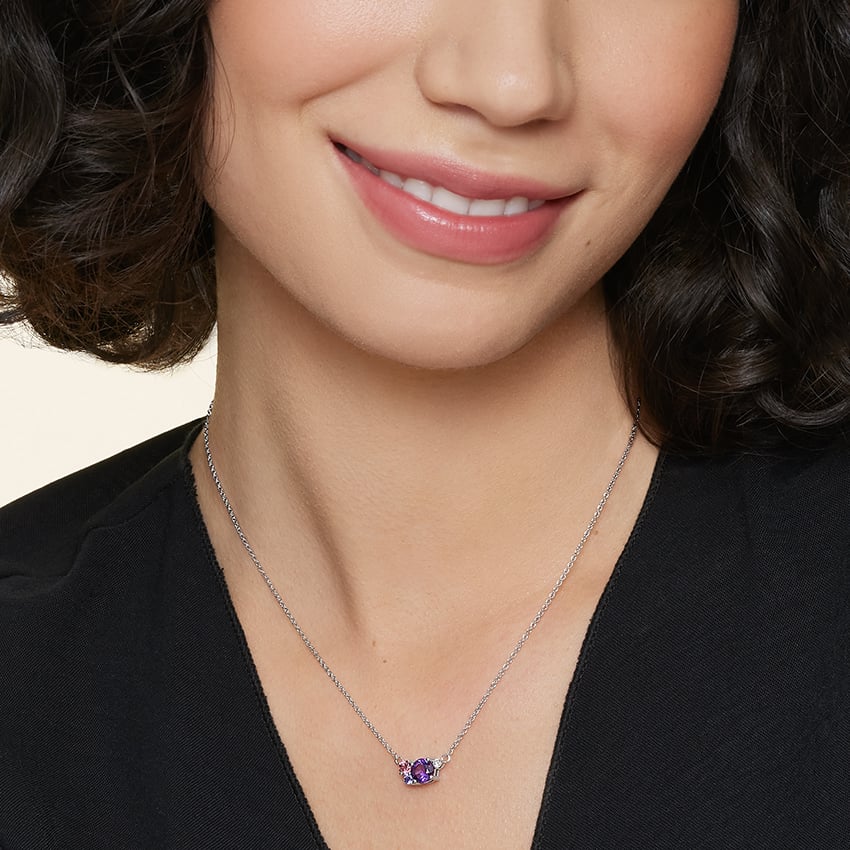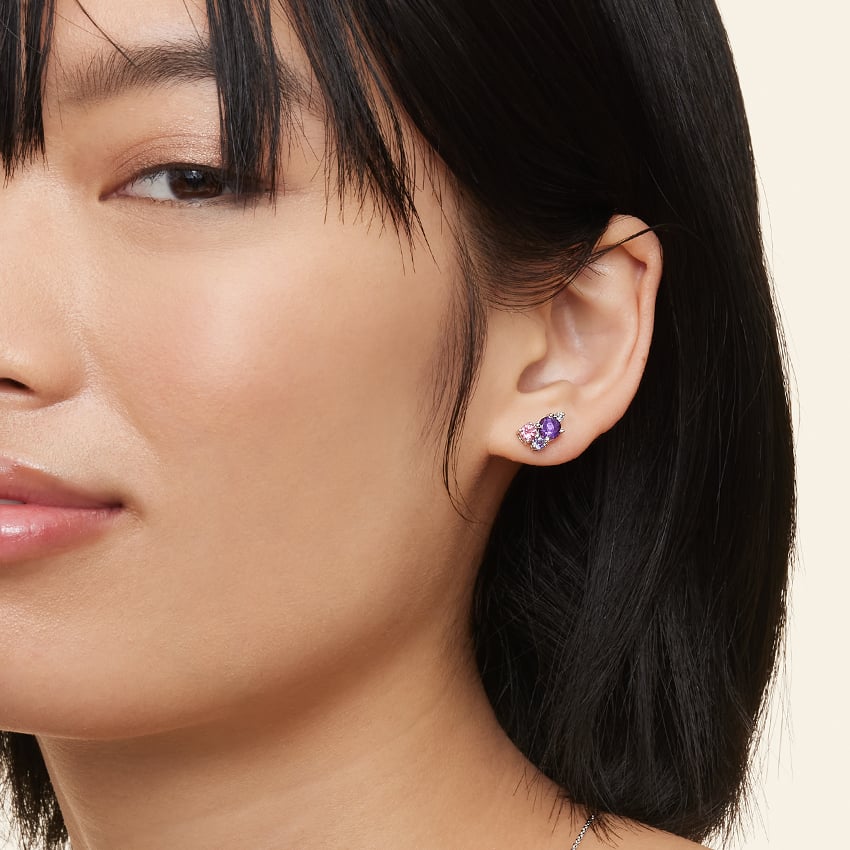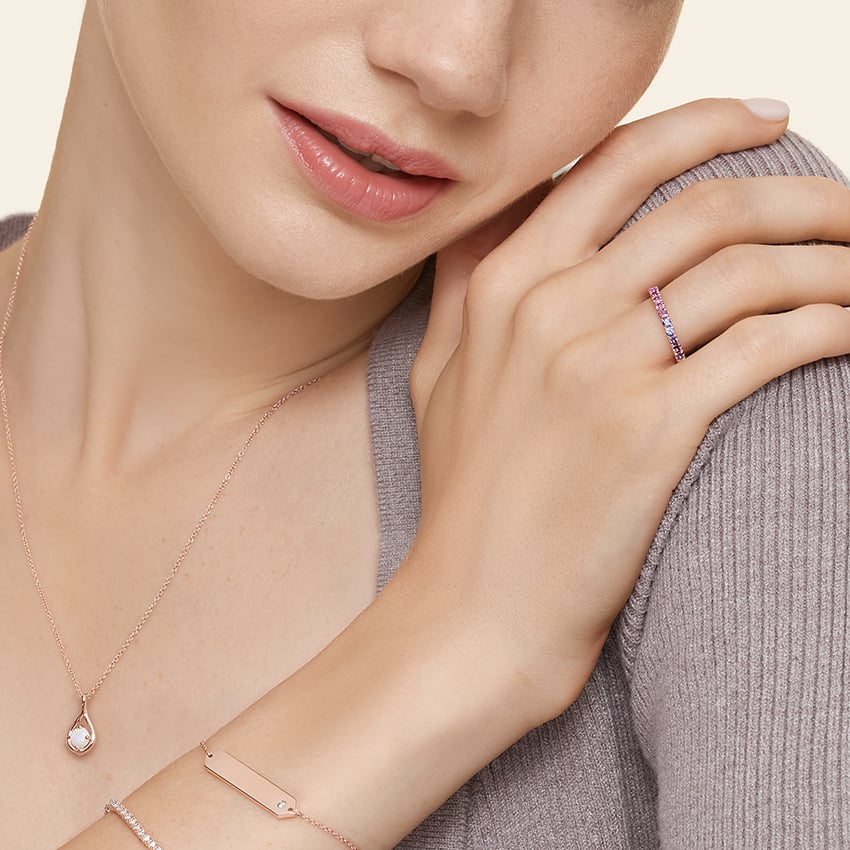
At the feet of Mount Kilimanjaro lies a special secret below the ground. It’s not a new species or a lost civilization. But in a matter of decades, it might be lost for good.
The story of tanzanite’s value is closely tied to its beauty, depth, and exclusivity. Since its discovery in 1967, the violet blue stone has been prized for its color and rarity. And with deposits expected to run out in the next twenty years, this already precious stone is expected to become more valuable in the coming years.
What is tanzanite?
Tanzanite, or zoisite, is known for its rich blue-purple hues. It’s the second most valuable blue gemstone just behind sapphire. And in 2002, it was dubbed as the official birthstone for December.
Like diamonds, tanzanite got a marketing boost from jewelers. Thanks to Tiffany & Co., the stone formerly known as “blue zoisite” was rebranded as “tanzanite” to honor its origins in Tanzania. Tiffany had exclusive rights to the gemstone through the 1970s. And because of its limited availability outside of Tanzania, the gem has retained its high value.
Zoisite naturally occurs in a range of colors from greens, blues, purples, and reds. But tanzanite comes from traces of vanadium deep within the mineral. When heat is applied to a stone containing vanadium, it results in a rich blueish purple color.

Does tanzanite have any value?
Unlike other gems like emeralds and diamonds, tanzanite isn’t available worldwide. Since it’s almost exclusively found in Northern Tanzania, tanzanite’s scarcity keeps it highly valued.
Most tanzanite stones have been artificially heated to bring out their blue and purple color. But the most valuable specimens are naturally blue. This process can affect a tanzanite sample’s price and value.
Tanzanite value ranges between $100 to $800 per carat depending on factors such as color, clarity, cut, and carat weight (more on that later). Generally, the deeper blue the stone, the higher the quality. For a AAA quality tanzanite, you can expect a value around $200 to $300 for a single carat all the way to $500 and up for 3 carats and above.
Is the value of tanzanite increasing?
Yes and no. In recent years, gem smuggling, the pandemic, and a rise in worldwide demand have all played an ongoing role in tanzanite’s value. This has caused prices of tanzanite to drop roughly 20%-30%.
Since tanzanite is only available in a small part of the world and is mined almost exclusively in Tanzania, it’s considered an investment stone. With mines expecting to run dry within the coming decades, eventually the only tanzanite available will be in previously-owned pieces.

Tanzanite Value vs. Diamond Value
While tanzanite and diamonds are both valuable, their stories are very different. First, diamonds aren’t subject to the scarcity that tanzanite is. While both stones are mined, diamonds can be grown in labs and are found worldwide rather than in one country. Diamonds also come in a variety of colors while tanzanite is at its most valuable in one deep blue hue. However, tanzanite is considerably softer than diamonds (6-6.5 on the Mohs scale compared to a 10). But like almost all gemstones, diamonds and tanzanite are graded by the famous 4 Cs – color, cut, clarity, and carat.
What factors impact the value of tanzanite?
Availability: Considering the limited known supply of Tanzanite, this stone is relatively undervalued for its availability. Some geologists estimate only 25 years worth of mining at the current rates of tanzanite. But compared to stones like emeralds and diamonds, demand for tanzanite hasn’t seen much change. But if no new deposits are found within that time, those with tanzanite could find themselves holding quite the investment.
The 4 Cs: Color, cut, clarity, and carat. When shopping for any gemstone, you’ll always encounter these 4 magical Cs. Each of these factors can affect the others when it comes to shopping for individual gems or those set in jewelry. When applied to tanzanite, color tends to be the heaviest of these factors. The most valuable tanzanite stones will have a deep blue or violet color with a clear shine on the inside. The cut of these stones can affect clarity and carat as well.

What color tanzanite is most valuable?
Tanzanite colors can range from light periwinkle purples to deep royal blues. Most of the stones on the market need heat treatment to take on their tones. But naturally occurring stones with deep blue coloring are the most prized.
What is the resale value of tanzanite?
The unique conditions that allowed tanzanite to form at the base of Kilimanjaro resulted in an investment stone for a generation. With steady demand for the gem in the US, India, and China, the price for new and used tanzanite in the coming decades is sure to rise.
Current tanzanite value can reach up to $700 for a 2 carat stone of the finest quality. But with mining rates expecting to dry up supplies, prices could change in the coming years.

Final Thoughts
From the way they’re priced and valued to how they’re shown off in jewelry, tanzanite has a lot in common with other gemstones. But its rarity, exclusivity, and exquisite color makes tanzanite a truly unique investment piece for your collection.




